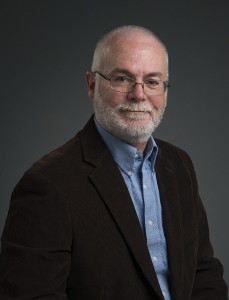Our Take: Will County CED Releases 2016 Growth Data
The Will County Center for Economic Development (CED) recently released its 2016 Annual Report. The county acquired 49 new business projects in 2016 which created more than 8,000 new jobs, $751.3 million in new investments and 15.2 million square feet of development. In light of the county’s development growth, we asked two of our project leaders to weigh in based on their professional experience working in Will County.
Civil Engineering in Will County
Rick Sinnott, senior project manager and head of EEA’s Mokena Office has lived and worked in Will County for nearly 30 years. He served on the Will County Stormwater Management Committee, South Suburban Home Builders Association legislative committee and was the chairman of the Mokena Site Plan & Architectural Review Committees.
 From a civil engineering perspective, Sinnott believes the Will County Stormwater Ordinance will continue to benefit growing development. The ordinance
From a civil engineering perspective, Sinnott believes the Will County Stormwater Ordinance will continue to benefit growing development. The ordinance
was created in 2002 to alleviate flooding and to minimize stormwater impacts from development.
“The biggest benefit is that all of the municipalities within Will County are using the same stormwater ordinance, so it has standardized the requirements,” said Sinnott. “My advice however is to always cross check with a licensed civil engineer to verify detention is not underestimated.”
Sinnott was most recently consulted about stormwater detention during the planning phases for a healthcare campus and medical office buildings in Will County.
Landscape Architecture and Conservation in Will County
Steven Gregory, PLA, ASLA, is EEA’s Director of Landscape Architecture. Gregory has worked in the south suburbs, including Will County for more than 20 years. He believes that another advantage of developing in Will County from a residential standpoint, is the adoption of the Will County Subdivision Ordinance. As a member of the South Suburban Builder’s Association (SSHBA), Gregory was previously the Municipal Outreach Committee Chair. He acted as a liaison between the SSHBA and Will County planning staff to revise the Will County Subdivision Ordinance in 2009. This gave him a deep understanding of the area’s development community.
What is the Will County Subdivision Ordinance?
The recent change to the Will County subdivision Ordinance focuses on incorporating existing environmental elements including stands of native trees, wetlands, floodplains, and other topographic constraints into the design of a project. This concept is part of Low Impact Development (LID). In recent years unincorporated Will County has moved from traditional suburban development to a more conservation focused design approach.
The idea of LID is not a new concept, but before Will County  incorporated the principles into the ordinances it was seen as a suggestion. Now in ordinance form, it is enforceable and helps the county develop in a manner that is more respectful of natural features.
incorporated the principles into the ordinances it was seen as a suggestion. Now in ordinance form, it is enforceable and helps the county develop in a manner that is more respectful of natural features.
“By offering density bonuses for implementing conservation design principles, developers are encouraged to build projects with the same density on smaller footprints and strike a balance with either open site space and/or conservation easements,” said Gregory. “In some cases this allows builders to keep or increase the number of units on a project while maintaining other open areas of the site for passive recreation opportunities.”
EEA is currently working on several projects within Will County, the south suburbs of Chicago and into Indiana. For more information about our civil engineering, landscape architecture and traffic engineering services please contact Principal and Director of Client Relations Tom Petermann at tpetermann@eea-ltd.com.